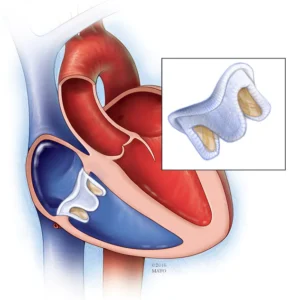Description
Familiarity with Treatment
Laparoscopic splenectomy is a minimally invasive surgical procedure used to remove the spleen. Since its introduction in the early 1990s, laparoscopic splenectomy has been performed with excellent results in terms of intraoperative and postoperative complications. It is considered the approach of choice for both benign and malignant diseases of the spleen, offering several advantages over traditional open splenectomy.
Procedure
During laparoscopic splenectomy, the surgeon makes several small incisions in the abdomen. A tiny video camera is inserted through one of the incisions to provide visualization, and the spleen is removed using special surgical tools inserted through the other incisions. The incisions are then closed. This minimally invasive approach allows for reduced postoperative pain and faster recovery compared to open splenectomy.
Who is it Suitable For?
Laparoscopic splenectomy is suitable for individuals with various conditions requiring spleen removal, including splenomegaly, trauma to the spleen, hematologic disorders, splenic abscesses, and splenic cysts. It is the standard of care for patients who need to have a splenectomy, offering benefits such as decreased postoperative pain, better cosmesis, faster return of bowel function, earlier return to normal activities, and shorter hospital stays.
Who is it Not Suitable For?
Laparoscopic splenectomy may not be suitable for individuals with specific contraindications to minimally invasive surgery or those who are not candidates for general anesthesia. In some cases, such as a ruptured spleen, a surgeon may find it necessary to perform an open splenectomy due to the severity of the condition.
Advantages
Advantages of laparoscopic splenectomy include:
- Reduced postoperative pain
- Better cosmesis
- Faster return of bowel function
- Earlier return to normal activities
- Shorter hospital stays
Complications
Complications following laparoscopic splenectomy are infrequent, but may include postoperative bleeding, wound infections, subphrenic abscess, ileus, portal vein thrombosis, thrombocytosis, thrombotic complications, and wound complications such as hematomas and seromas. Additionally, individuals who have undergone splenectomy are at risk of overwhelming post-splenectomy sepsis (OPSS) or overwhelming post-splenectomy infection (OPSI).
Preoperative Care
Preoperative care for laparoscopic splenectomy involves a thorough evaluation by a surgeon qualified in laparoscopic surgery to determine the need for surgery and the most appropriate approach. This may include medical risk reduction, diagnostic tests, and discussions about the procedure, potential risks, and expected outcomes.
Postoperative Care
Postoperative care for laparoscopic splenectomy includes monitoring for complications such as bleeding, infections, and thrombotic events. Patients may require close follow-up to monitor for signs of overwhelming post-splenectomy sepsis and to receive appropriate vaccinations to reduce the risk of infections.





Reviews
There are no reviews yet.